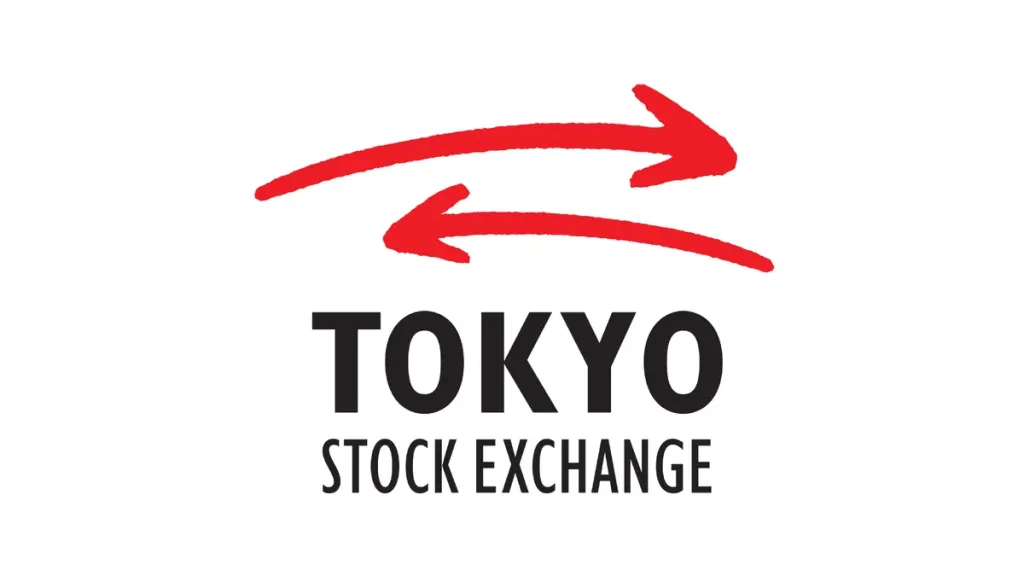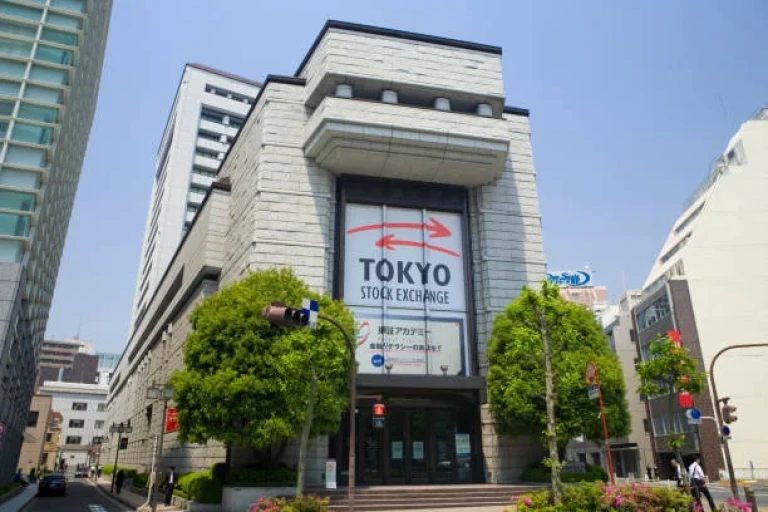What is Tokyo Stock Exchange or TSE?

The Tokyo Stock Exchange (TSE) is the largest stock exchange in Japan and one of the largest exchanges in the world by market capitalization. It was founded in 1878 and is headquartered in Tokyo, Japan. The TSE is part of the Japan Exchange Group (JPX), which also includes the Osaka Securities Exchange, Nagoya Stock Exchange, and JASDAQ. In this article, we’ll take a look at the history of the Tokyo Stock Exchange, its recent performance, and how it works.
What is Tokyo Stock Exchange (TSE)?
The largest stock exchange in Japan, with its headquarters in Tokyo, is called the Tokyo Stock Exchange (TSE). On May 15, 1878, the Tokyo Stock Exchange was founded. The exchange had 3,821 listed companies as of September, 2022. The TSE also provides detailed trading data, historic and real-time index quotations, market statistics, and data from and about experts.
The largest and best-known Japanese corporations with a global presence, such as Toyota, Honda, and Mitsubishi, are represented on the Tokyo Stock Exchange (TSE), which is operated by the Japan Exchange Group.
History of Tokyo Stock Exchange
The Tokyo Stock Exchange (TSE) is the largest stock exchange in Japan. It was established in 1878, and its history is closely tied to the economic development of the country. The TSE was the first stock exchange in Asia, and it played a crucial role in the Meiji Restoration of 1868-1869, which saw the end of the Tokugawa shogunate and the rise of modern Japan.
In the early years of the TSE, only a handful of companies were listed on the exchange. But as Japan’s economy rapidly grew in the late 19th and early 20th centuries. By 1930, there were over 500 companies on the TSE.
During World War II, trading on the TSE came to a halt as Japan focused its resources on the war effort. The exchange didn’t resume operations until 1949. In the postwar years, the Japanese economy experienced a period of rapid growth, known as the “economic miracle.” The TSE flourished during this time, and by 1968 it had become one of the world’s largest stock exchanges.
In recent years, the TSE has faced challenges due to competition from other exchanges and the global financial crisis of 2008. But it remains one of the largest and most important stock exchanges in the world.
Performance of TSE
The Tokyo Stock Exchange is a leading global exchange, with a market capitalization of over $5 trillion.
The TSE has a diverse range of listed companies, including many of Japan’s largest and most well-known businesses. The exchange is home to 29 Nikkei 225 companies, including Toyota, Sony, and Honda.
In recent years, the TSE has been one of the best-performing stock exchanges in the world. Between 2013 and 2018, the TSE’s benchmark index, the Nikkei 225 Index, rose by nearly 60%. However, in 2019 the TSE experienced its worst year since 2011, with the Nikkei 225 Index falling by over 7%.
Present Performance of Tokyo Stock Exchange
The Tokyo Stock Exchange (TSE) is the largest stock exchange in Japan. It is located in the Tokyo district of Marunouchi. The TSE is owned by the Japan Exchange Group (JPX), which also owns the Osaka Securities Exchange.
The TSE has 3821 listed companies with a combined market capitalization of $5.67 trillion. It is the second largest stock exchange in Asia and the seventh largest in the world. The TSE is open from 9:00am to 3:00pm Monday to Friday.
The TSE is a leading global exchange, with strong performance in recent years. In 2016, the TSE was the world’s fourth-largest stock exchange by market capitalization. In 2017, it was the fifth largest. And in 2018, it was the sixth largest.
The TSE has been a stable and reliable investment destination for foreign investors. In 2018, foreign investors bought a record ¥5 trillion ($45 billion) of Japanese stocks. This was an increase of 30% from the previous year and represented 10% of all trading on the TSE.

As of september 2022, Year to date performance of TSE is falling behind by 18.74% since the beginning of the year.
How does it work?
The TSE was established in 1878, and its current iteration was founded in 2003. The TSE trades stocks, bonds, and other securities. It is open from 9:00 AM to 3:00 PM Japan Standard Time.
To trade on the TSE, one must be a member of the exchange. Membership can be obtained through working for a member firm, or by investing a large sum of money. Once an individual is a member, they can trade through the TSE’s trading floor or via its electronic trading system.
The TSE has two indexes: the Nikkei 225 and the TOPIX. The Nikkei 225 is a price-weighted index of 225 Japanese companies that trade on the TSE. The TOPIX is a capitalization-weighted index of all first section stocks on the TSE.
The TSE is home to many Japanese companies, including Toyota, Sony, and Honda. Foreign companies are also listed on the TSE, such as Coca-Cola and Boeing.

Top components Tokyo Stock Exchange
The TSE is home to some of the largest and most well-known companies in Japan, such as Toyota, Sony, and Honda. While the TSE has a long history dating back to the early 1800s, it has only been open to foreign investors since 1988.
Despite its relatively late start compared to other major stock exchanges, the TSE has been one of the best performing exchanges in recent years. In 2015, the TSE was the second best performing stock exchange in the world with an annual return of over 7%.
If you’re looking to invest in Japanese stocks, here are some of the top companies that are listed on the Tokyo Stock Exchange:
- Toyota Motor Corporation (TM)
- Sony Corporation (SNE)
- Honda Motor Company (HMC)
- Mitsubishi Motors Corporation (MMTOF)
- Canon Inc. (CAJ)
- Nintendo Co., Ltd. (NTDOY)
Tokyo Stock Exchange vs National Stock Exchange India
When it comes to stock exchanges, there are really only two that matter in Asia: the Tokyo Stock Exchange (TSE) and the National Stock Exchange of India (NSE). Both are large, well-established exchanges with a long history of operation. But which one is better?
The TSE is the larger of the two exchanges, with over 3,500 listed companies and a market capitalization of over $6 trillion. It is also the oldest exchange, having been founded in 1878. The NSE, on the other hand, was founded in 1992 and has around 2,000 listed companies.
In terms of performance, the TSE has been the most successful exchange. It was the most active exchange in Asia in 2016, with a total trading value of $5 trillion. The NSE lagged behind with a trading value of $2.9 trillion.
One key difference between the two exchanges is that the TSE is a public company, while the NSE is a private company. This means that the TSE is more transparent and accountable to its shareholders. The NSE also has stricter listing requirements, which has helped it to attract some of the biggest companies in India.So, which exchange is better? It really depends on what you are looking for. If you want a large, well-established exchange with a long history of operation, then the TSE is the better choice. If you are looking for a more modern exchange with stricter listing requirements, then the NSE is the better choice.









